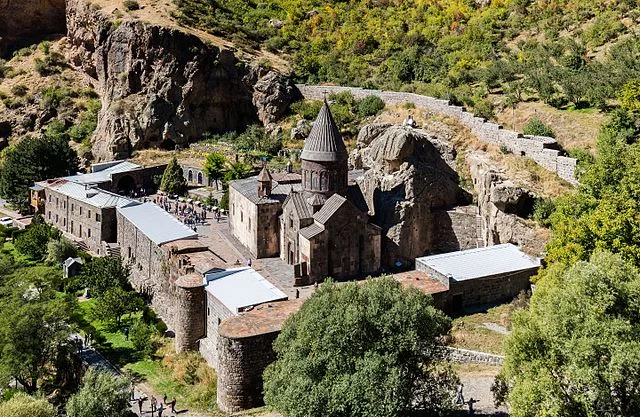Geghard Monastery, a prominent Armenian Christian site, holds a unique place in medieval history. The monastery, located in the Azat Valley near the town of Garni, Armenia, is renowned for its rock-carved churches and medieval architecture. It symbolizes both Armenia’s religious history and its remarkable stone-carving skills.
Get your dose of History via Email
Origins and Historical Background
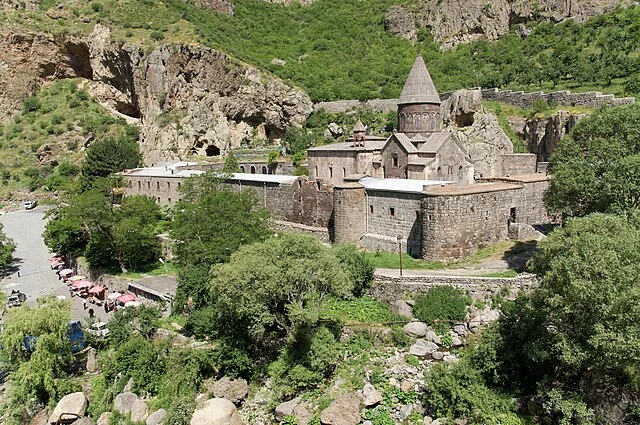
Geghard Monastery traces its origins back to the early 4th century AD when Christianity became Armenia’s official religion. Tradition holds that Saint Gregory the Illuminator, a key figure in Armenia’s Christian conversion, founded a chapel at the site. Initially, locals called the monastery “Ayrivank,” meaning “Monastery of the Cave,” reflecting its distinctive cave architecture.
The monastery gained its current name, Geghardavank (Monastery of the Spear), in later centuries. The name references the Holy Lance, believed to be the spear that pierced Christ’s side during the crucifixion. This relic, stored at Geghard for centuries, added to the monastery’s spiritual significance. Today, the lance is kept at the Echmiadzin Cathedral in Armenia.
Architectural Significance and Design
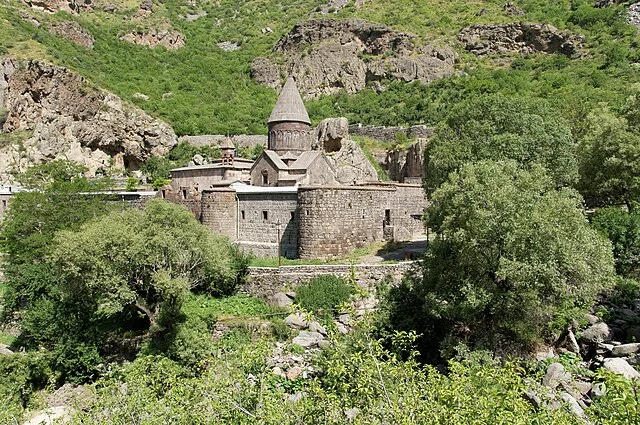
Geghard Monastery’s architectural design reflects Armenia’s medieval stone-carving tradition. The main structures date from the 12th and 13th centuries AD, during the reign of the Zakarian princes, who oversaw an expansion of the site. Skilled craftsmen carved parts of the monastery directly into solid rock cliffs, giving it a unique, integrated appearance.
The monastery consists of several churches and tombs. The main church, Katoghike, built in AD 1215, features traditional Armenian cross-domed architecture with intricate carvings. Adjacent to Katoghike is the Gavit, a type of antechamber typical in Armenian churches, which served as both a gathering space and a mausoleum.
Geghard’s rock-carved chapels are among its most notable features. Craftsmen carved chapels like St. Astvatsatsin and the Zhamatun directly from solid rock, requiring precision and skill. The chapels contain detailed reliefs, illustrating both Christian symbols and local motifs, such as interlocking crosses and animal figures.
Religious and Cultural Importance
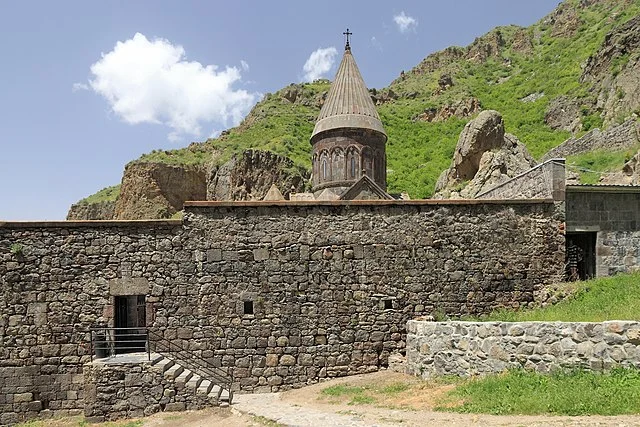
Throughout history, Geghard Monastery has served as both a religious and cultural center. It attracted pilgrims seeking blessings from the Holy Lance relic and seeking healing powers believed to be connected to the site. In medieval Armenia, monasteries also played significant roles in cultural preservation, acting as centers for learning and manuscript creation. Scholars believe monks at Geghard Monastery transcribed religious manuscripts and contributed to Armenian literature.
Geghard Monastery Today
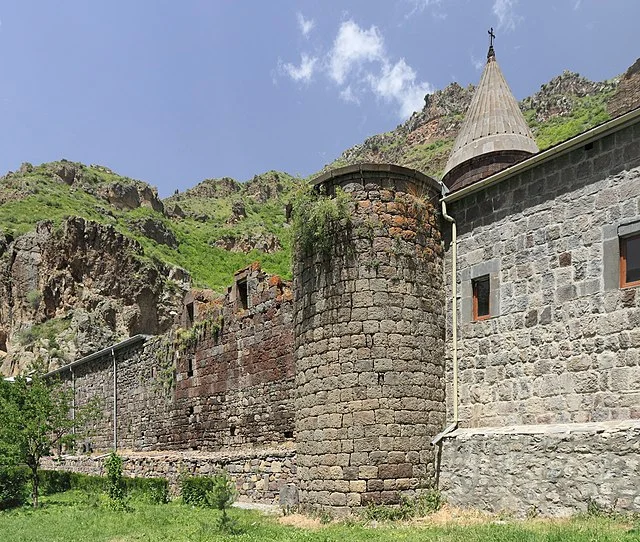
Geghard Monastery remains an important pilgrimage site and tourist attraction in Armenia. In 2000 AD, UNESCO recognized it as a World Heritage Site, acknowledging its architectural and historical significance. The recognition helped preserve the site, ensuring that visitors can explore its unique stone structures and spiritual atmosphere.
Geghard Monastery represents Armenian medieval culture and religious heritage. Its intricate rock-carved architecture and role in Armenian Christianity continue to attract visitors, scholars, and pilgrims worldwide.
Source:

